Photo Essay: Treasures From The Land Of Enchantment’s Interactive Encyclopedia
Treasures From The Land Of Enchantment’s Interactive Encyclopedia

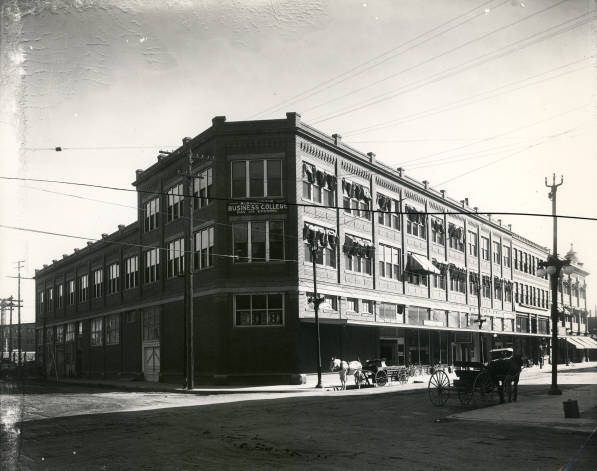
Alabama Milner came to Albuquerque in 1918 with her niece and her children. Milner worked for the photographer William Walton. Algernon Milner, (Alabama's brother) bought the Walton studio in 1919 and later turned the business over to his sister, who was the primary photographer until her retirement in 1955. Miss Milner captured on film important history of Albuquerque in her years as one of the city's leading photographers. The Alabama Milner Collection was purchased by the The Albuquerque Museum with a 1987 General Obligation Bond.
Photo by William Walton, c. 1919, Courtesy of Albuquerque Museum
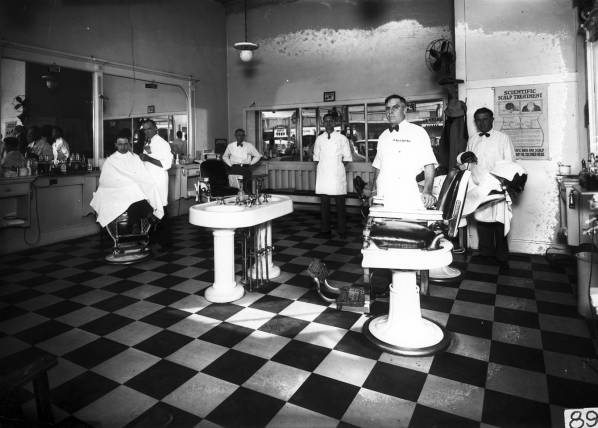
Bernie’s Barber Shop at 105 North Fourth Street in 1930
Photographer unknown, courtesy of Albuquerque Museum

Bodies of dead troopers returned home. On March 9, 1916, at 4 a.m. the village of Columbus, N.M., was attacked by the troops of Pancho Villa. Ten townspeople and eight soldiers from Camp Furlong were killed. President Woodrow Wilson was outraged and ordered General John "Blackjack" Pershing to pursue the Mexican revolutionists south of the border into Mexico and capture Pancho Villa.
Photo by Otis Aultman Studio, courtesy of Albuquerque Museum

Carrie Tingley outside the Alvarado hotel. Clyde Tingley and his wife, Carrie, moved to New Mexico in 1910 from Ohio hoping that the climate would help Carrie's tuberculosis. Tingley's varied political positions included the Albuquerque City Commission as alderman, New Mexico Highway Department district maintenance superintendent, twice-elected governor and, finally, he served as Mayor of Albuquerque from 1940 to 1953. Photo taken c. 1930.
Photographer unkown, courtesy of

Old Town Tigers baseball team, circa 1910
Photographer unkown, courtesy of Albuquerque Museum

“Our Gang,” aka Hal Roach’s Little Rascals, in Albuquerque, circa 1930
Photo by The Brooks Studio
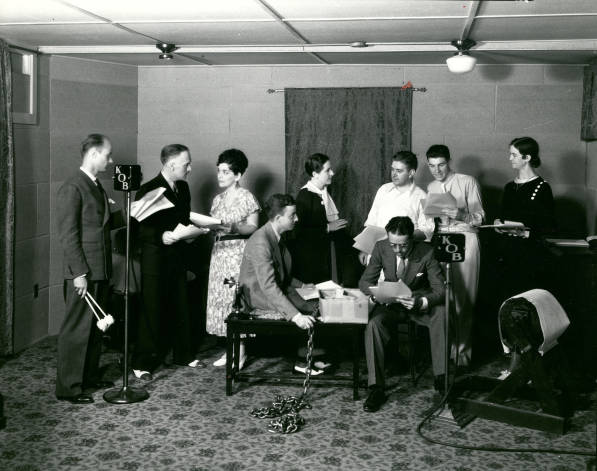
A radio performance for KOB, circa 1930
Photo by The Brooks Studio

The Albuquerque Indian School football team, circa 1927
Photo by The Brooks Studio

Backed by Gov. Clyde Tingley and the WPA, the Albuquerque Municipal Airport opened in 1939. It had two runways. Pictured behind the plane, in 1950, is a Pueblo-style terminal designed by Ernest Blumenthal.
Photo by Harvey Caplin

Albuquerque Municipal Airport, arrival of Duke and Duchess Albuquerque from Spain for "Enchantarama" celebration. Albuquerque in the 1930s had two competing private airports, Oxnard Field on the east of town and the West Mesa Airport. A proposal was made to secure Works Progress Administration (WPA) funds to consolidate Albuquerque's commercial air service in one location. Governor Clyde Tingley broke ground in 1937 for the new airport. Albuquerque Municipal Airport opened in 1939 with two runways and a Pueblo style terminal designed by Ernest Blumenthal. Trans World Airlines (TWA), Pioneer Airlines, Frontier Airlines, Monarch Airlines, and Continental Airlines served the airport through the forties and fifties.
Photo by Milo Crawford, 1956
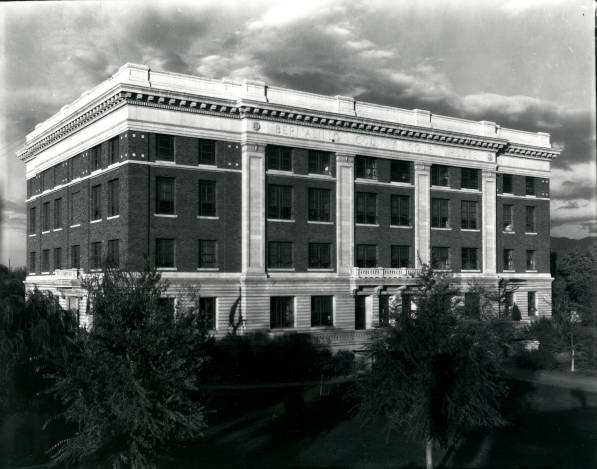
Bernalillo County Courthouse on Tijeras Avenue, c. 1925
Photo by The Alabama Milner Studio
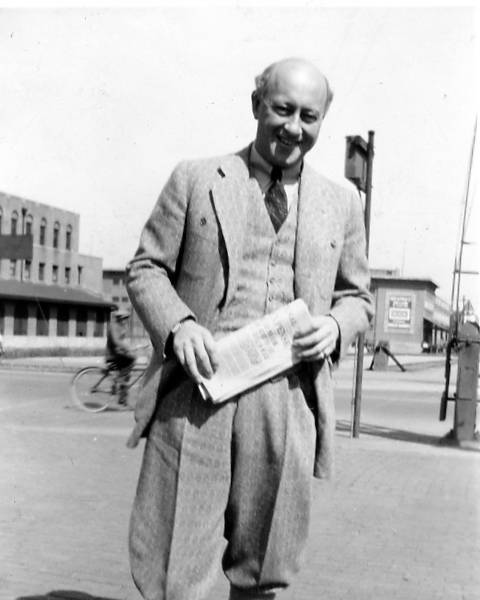
Cecil B. DeMille at the Alvarado Hotel c. 1925. Photographer William Steele Dean worked at the KiMo Theatre as the organist playing accompaniment for the silent films. Dean was a silent film fan and would walk the few blocks to the Santa Fe Railway Depot and Alvarado Hotel hoping to take photographs of the famous passengers. The Santa Fe California Limited spent a little more than an hour at the Alvarado Complex, which gave the passengers time to take a break and visit the café and Fred Harvey Indian Building. The stop gave Dean time to approach the notable people and with courtesy ask to take their pictures for his scrapbook. The photographs in this set were all taken in the mid ’20s.
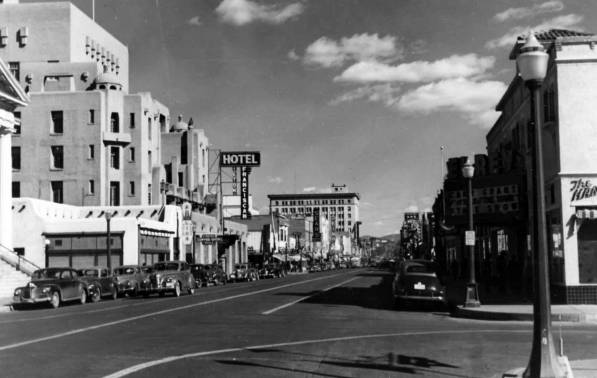
View down Central from in front of the El Rey, circa 1940
Photo by Jeffrey Leroy McDaniel
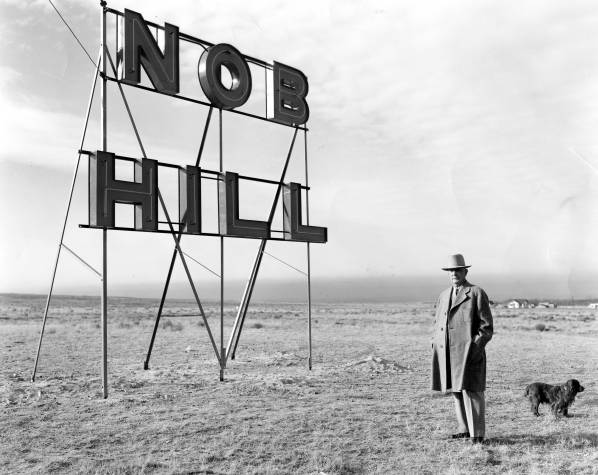
D.K.B. Sellers in front of the Nob Hill sign, circa 1940. Sellers created the Nob Hill Shopping Center at Central and Carlisle in 1946.
Photographer unknown

A South Valley farm, circa 1916
Photo by The Alabama Milner Studio








